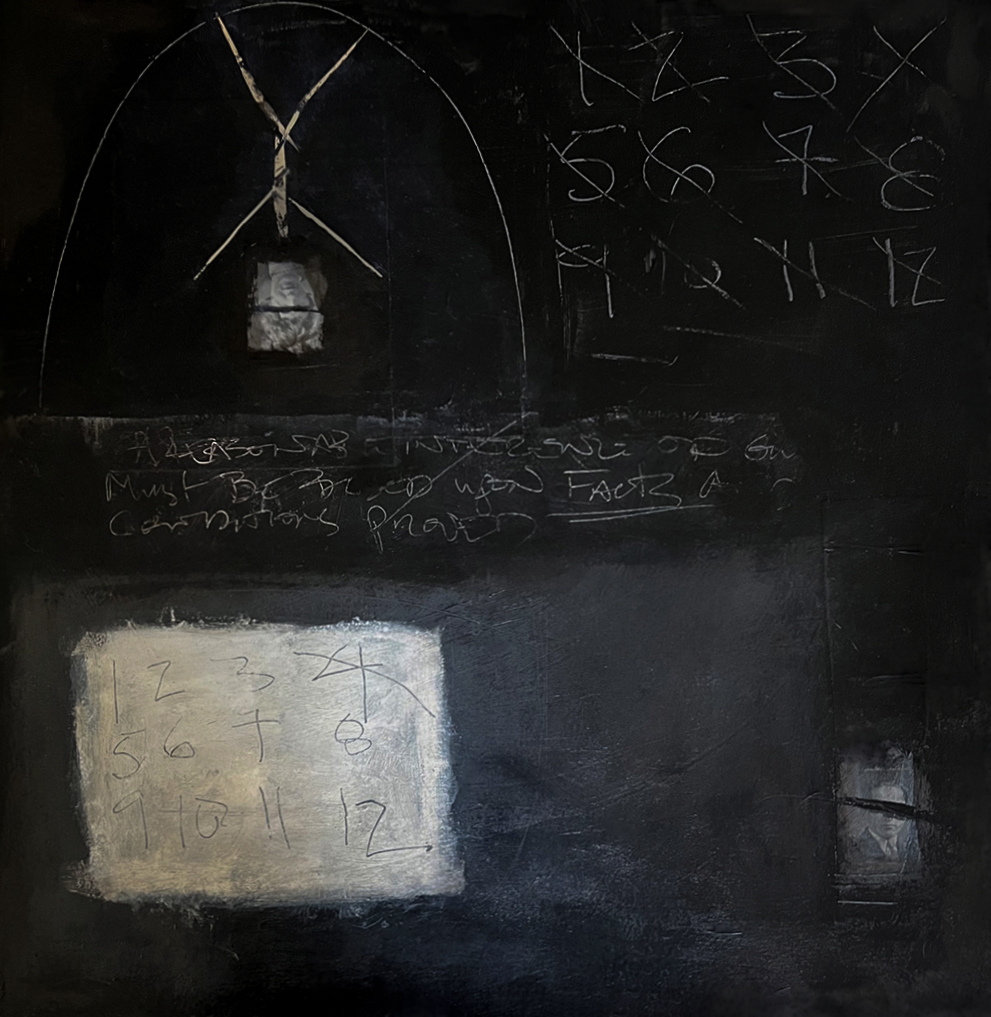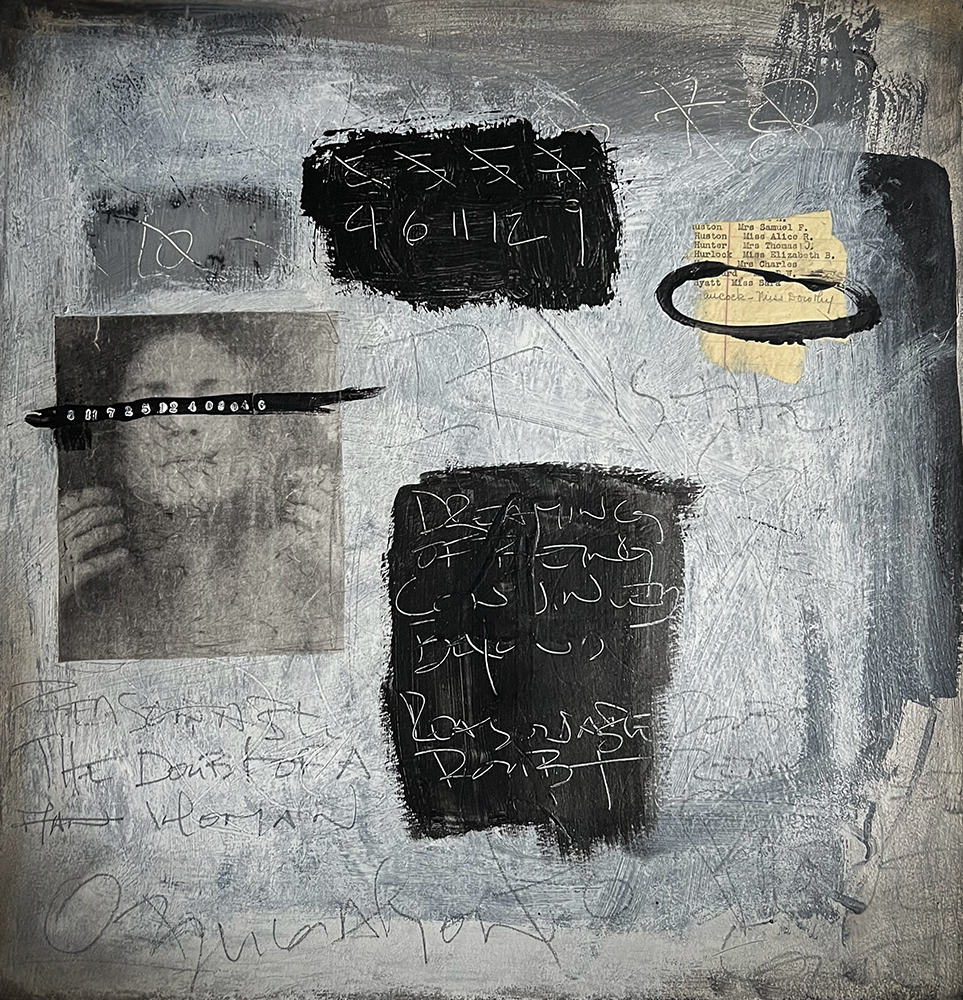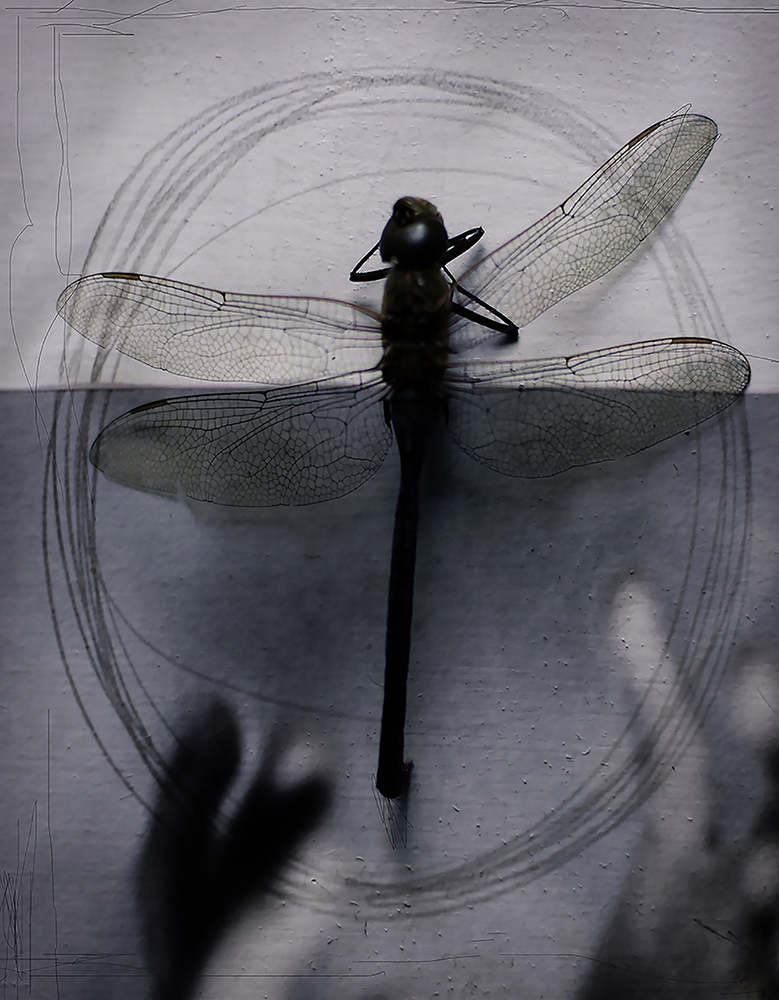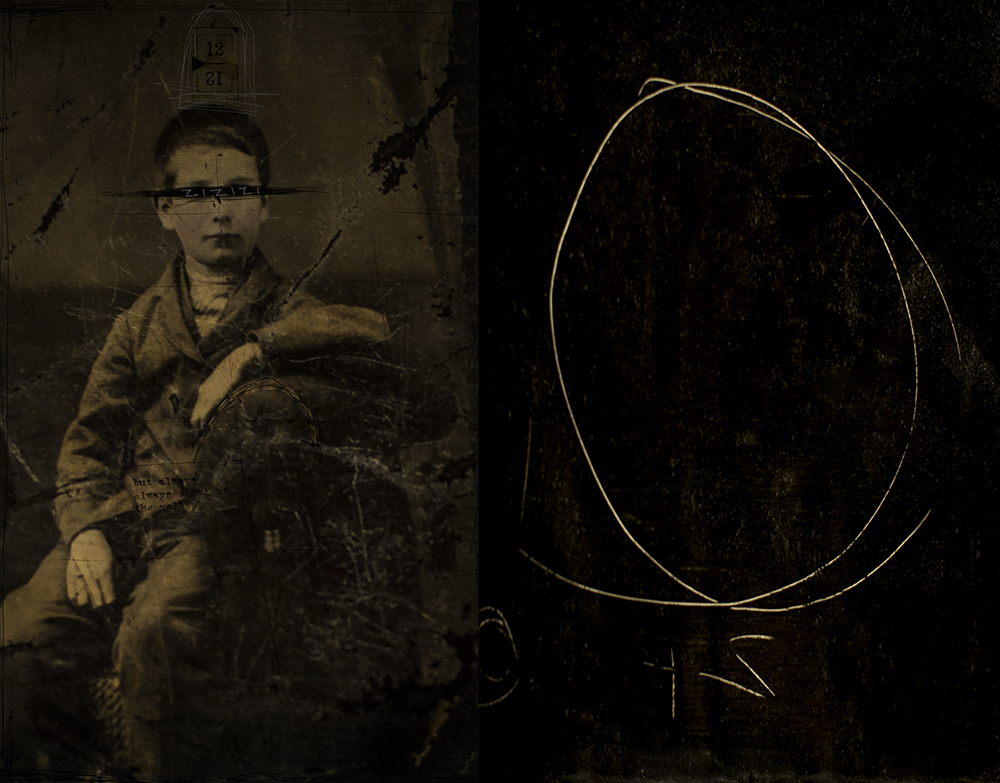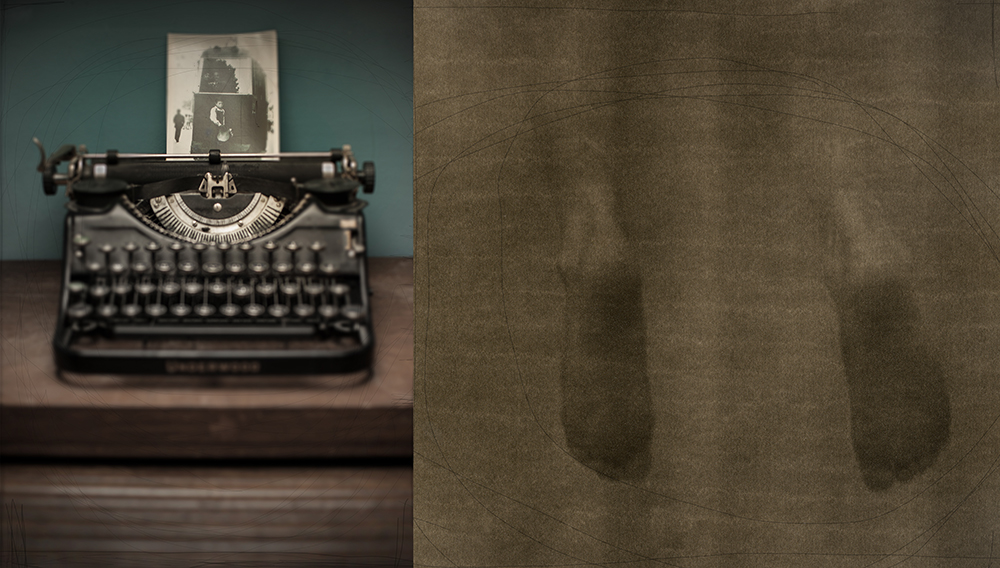Peggy Washburn: Precisely Now
I have watched the work of Peggy Washburn for awhile and have always enjoyed seeing her work on social media, but it wasn’t until my friend Dawn Surratt mentioned that she thought Peggy’s work was pure brilliance that I looked to see if she was already featured on Lenscratch. Once I realized that she was not, I emailed her immediately. Peggy pairs symbolic imagery and paintings and drawings, creating interesting relationships with not only memory but time. This balance and order produces interesting narratives. Precisely Now, Peggy’s most recent series, is inspired by her and her husband’s bouts with Covid 19 before the vaccine was available. This subject seems like a perfect topic for how Washburn works, because it feels like the whole world is out of order.
All things happen, happen to one, precisely now. Century follows century, and things happen onlyin the present. There are countless men in the air, on land and at sea, and all that really happens happens to me.-Jorge Luis Borges, The Garden of Forking Paths
Precisely Now
Combining images satisfies a compulsion of mine to place the random into a narrative. These narratives loosely explore ideas surrounding balance, memory and time, while paying homage to irrational superstitions. They reflect a chaos that sometimes pervades my consciousness, mixing past with present to form an imagined world inside of an existing one. -Peggy Washburn
Peggy Washburn is an interdisciplinary artist and educator whose work has been acquired by permanent collections including the Bibliothéque Nationale de France, The Harry Ransom Center, Museo Nazionale della Fotografia, and The Ralph Lauren Collection. Along with numerous gallery shows her work has been exhibited at Frye Art Museum, Seattle Art Museum Gallery, Whatcom Museum of History and Art, Woodmere Art Museum and Aperture NYC. She currently serves on the Academic Advisory Board for University of Washington’s Certificate in Photography and lives in Philadelphia, where she runs an after-school photography program for at-risk youth.
Follow Peggy Washburn on Instagram: @Peggy_Washburn
GB: Tell us a little bit about your childhood and how you became an artist?
PW: Initially, I didn’t consider myself an artist because I couldn’t draw representationally. A close childhood friend’s mother was an artist. I wanted to spent all of my waking hours at their house. Ironically, that same mother was exceptionally skilled at representational drawing, which reinforced my misconception. I would sit in my closet (my first art studio) and paste things I’d collected into books. Later, when I was sixteen my parents purchased a poster from the Mark Rothko retrospective at L.A. County Museum. I awakened one morning to find the poster on our kitchen wall and stopped in my tracks. His use of color and shape stirred such emotion. I’ll never forget the moment… it changed my life. I learned much later that Rothko had mastered representationalism prior to starting his abstract expressionist work. I’m glad I didn’t know then.
GB: I realized we share something in common beyond art. We are both left handed. I was whipped in the first grade because I would flip the paper over in a notebook so my hand didn’t hit the metal clips. Do you think being left handed informs how that you make Art? If so how?
PW: I’m sorry about your first grade experience. It’s sad and reflective of the time. I was among the last generations in this country required to use our right hands in school. I’m also dyslexic, which is not uncommon among left-handed artists. In fourth grade I was moved to a special school and we were taught to write by drawing large lines and circles. I have positive memories of that exercise. I still draw lines and circles.
GB: In your work it seems like you are trying to arrange, organize and find order or make sense of the world like piecing together a puzzle. What motivates you to work this way?
PW: My work is loosely based on ideas surrounding balance, order, disorder and time. The disorder in my brain dictates a need for order in my external world. Memory also plays an important role with respect to image placement and narrative. Our family carries a copy of the gene that creates a predisposition for Alzheimer’s. I watched my great-grandmother, grandmother and now mother all slowly lose themselves, or at lease who we knew them to be.
I wouldn’t necessarily say that memory is an obsession, but always in my consciousness.
GB: What inspires your work conceptually?
PW: I love the contributions left by the late Dr. Oliver Sacks. I attended one of his lectures and he spoke about the evolution of creativity. He also relayed a story in which he’d discovered one of his vivid childhood memories didn’t in fact happen. Instead, he’d merely been present when a letter was read aloud, describing the incident in detail (*Seattle arts and Lecture series, Benaroya Hall, 2004). It’s crazy to think that some of our memories may not be our own. Literature also inspires my work. I’m particularly drawn to Borges, not because I actually understand what he’s saying, but because I feel pulled to reread his stories until I think I might be closer to understanding. Then there’s life. I recently hung a jury, which definitely had an impact on my art. It was a double homicide and the panel deliberated for four days. I felt strongly resolute in my position, but self questioning was also present. It’s hard to experience something intense while not being able to discuss it with loved ones. It’s also empowering.
GB: Describe the experience with Covid 19 and how it inspired the series Precisely Now?
PW: My husband and I had COVID in 2020, before the vaccine. It was humbling and scary. We were in isolation for three weeks, which was ample time to reflect on my art, life and gratitude for both. The Precisely Now series was already underway, but the experience pushed me to reexamine what I was saying . I expanded my vision for the project. Many of the pieces were “repurposed” and the work as a whole took a new direction. The series is still underway and includes new influences, but hopefully still cohesive enough to hold together.
GB: Talk more about your process of making and your use of painting, drawing and images together?
PW: I usually start with a drawing or painting, sometime a photograph. The pieces are fused together onto canvas, board or paper, along with various combinations of pigment, ink and wax. Sometimes I print images onto tissue, which dissolves into wax during the image transfer. At some point in the process I ruin what I’m working on and consequently spend equal amounts of time trying to fix what I’ve ruined. The process is completely nonlinear and I never end up with what I originally planned. I think I’m still sitting in a closet, pasting together found objects.
Posts on Lenscratch may not be reproduced without the permission of the Lenscratch staff and the photographer.
Recommended
-
Luther Price: New Utopia and Light Fracture Presented by VSW PressApril 7th, 2024
-
Artists of Türkiye: Sirkhane DarkroomMarch 26th, 2024
-
European Week: Sayuri IchidaMarch 8th, 2024
-
European Week: Steffen DiemerMarch 6th, 2024
-
Rebecca Sexton Larson: The Reluctant CaregiverFebruary 26th, 2024


